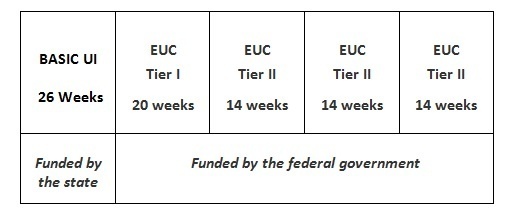By Jon Bloom, Workers Defense League, Columbus Day, 2010
Democrats, the unemployed, and advocates for the unemployed celebrated the restoration in late July of funding for extended unemployment insurance (UI) benefits. The federally-funded extensions give the unemployed up to 67 additional weeks of benefits once they exhaust their initial 26 weeks of UI from state funds. Currently about five million of the 10 million Americans receiving UI have exhausted their “initial” benefits and are receiving these extended benefits. Roughly three million were thrown off UI during the more than 50 days it took to break the Republican filibuster blocking the continued funding. (Most were able to get their benefits restored retroactively once the filibuster was broken.) But Congress only restored funding for a six-month period, from May 30 to November 30.
Less than two months from now, when that funding expires, millions of unemployed could again be without UI, with little chance of a rescue like the one in July. That’s because Republicans, if they gain in the mid-term election, are likely to succeed in blocking further funding for extended benefits, either by November 30 or when the new Congress begins in January 2011.
This means that individuals who have applied for UI since June 1, 2010 will be eligible for a maximum of 26 weeks of UI and no more. Those who have already begun receiving extended benefits will not be cut off immediately, but very few will be eligible for the full 93 weeks.
The reason is that “extended” UI is actually a series of four extensions, three of them called Emergency Unemployment Compensation (EUC) “Tiers” (running 20, 14, and 13 weeks) and the final one called Extended Benefits (EB), running an additional 20 weeks. As a UI claimant finishes one extension, he or she moves to the next one without interruption, a little like stepping from rooftop to rooftop along a series of buildings. The benefit rate (the amount the claimant receives each week), established at the beginning of the claim, remains the same throughout.
But if the extended benefit program is not renewed, when claimants reach the end of whatever “Tier” they are in, that’s it. There is no “next rooftop” to step to—you’ve reached the end of the block. The several million unemployed who were thrown off UI during June and July, when funding for the extensions was blocked, had exhausted their initial UI or completed one of the three Tiers. Starting November 30, this could happen again. Within a short time, millions of unemployed would be off the UI rolls. In this moment of continuing near-10% unemployment and near-record long-term unemployment, this cutoff could devastate millions of families who are staying afloat with the help of UI benefits.

